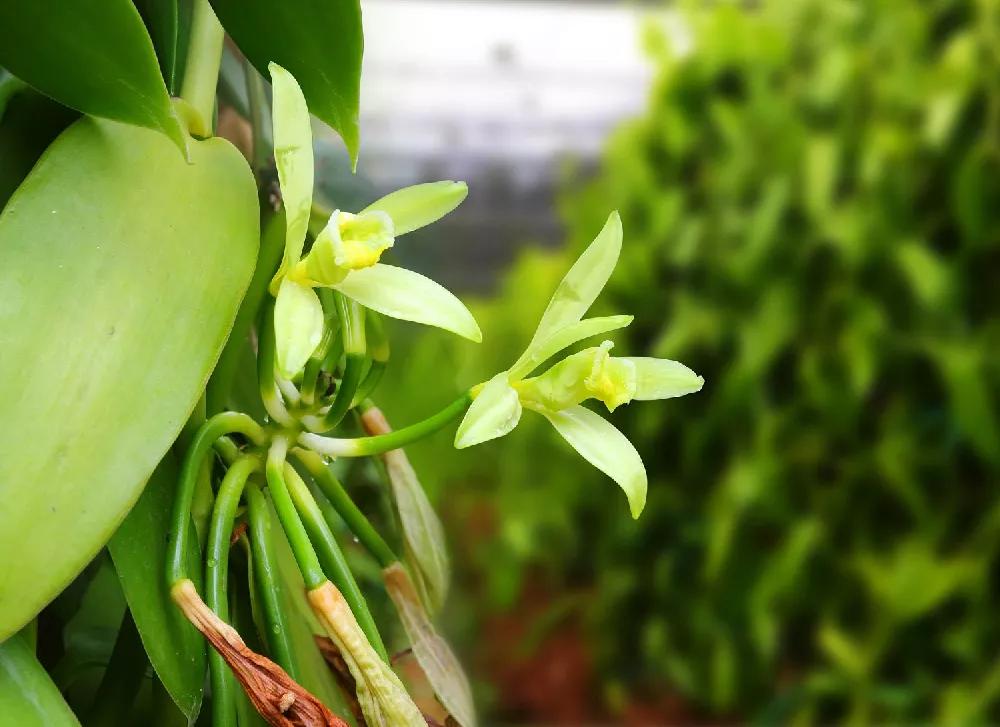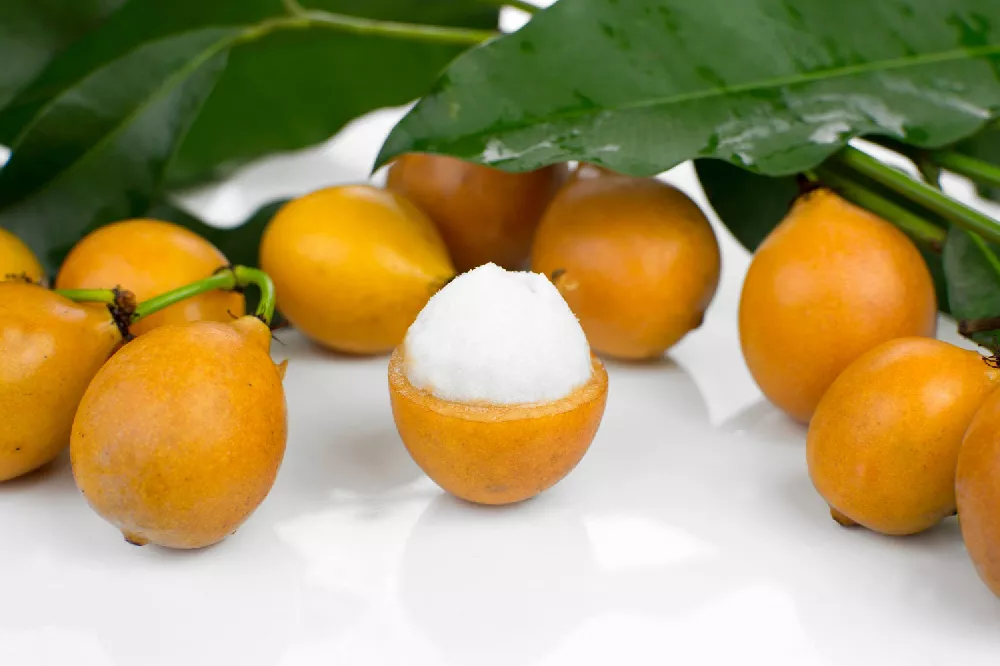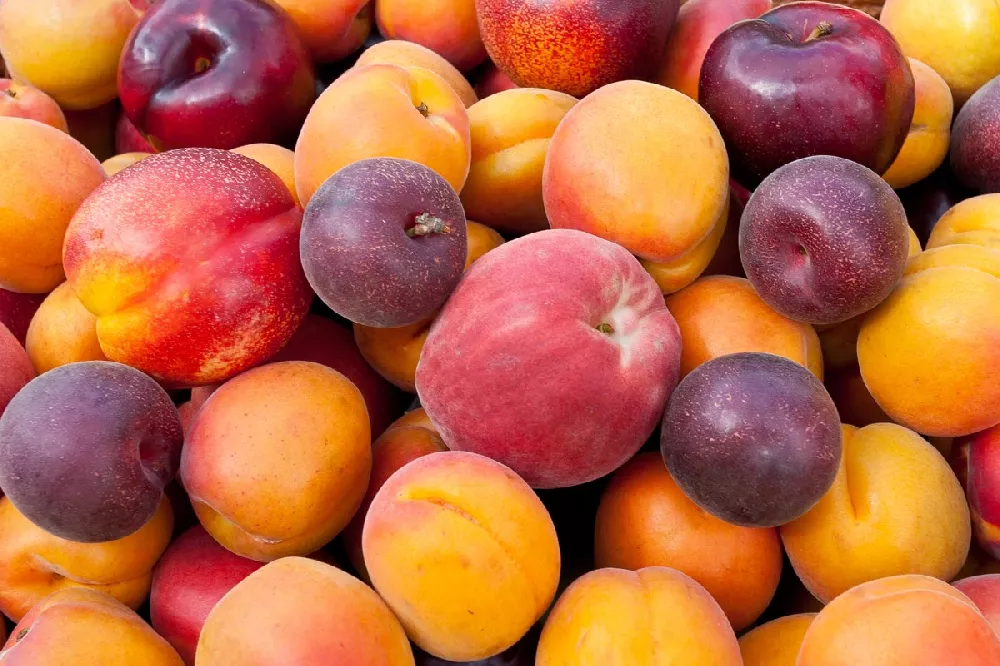- Home >
- Edible Plants >
- Papaya Tree
Papaya Tree for Sale
Papaya plants are native to the tropical and subtropical Americas. They are found in the tropical climates of North, Central, and South America. A dwarf variety, Carica papaya ‘Red Lady’ will grow well in the ground or as a container plant. It was developed for the sweet, nutritious fruit but also the glossy green foliage. Other reasons you should consider your own Red Lady papaya plant include:
- The fragrant white or cream-colored flowers attract bees, birds, and butterflies.
- Papaya is valued for its calcium, iron, protein, and vitamins A, B, C, and G.
- Papayas are hollow-stemmed plants instead of trees with solid trunks.
Enter your zip code to find nearby stores that may carry this plant.
Plant Care
Sunlight

Papaya plants do best in full sun, 6-8 hours of direct sunlight a day.
Watering
Although they don't like wet soil, papayas need watering every few days and appreciate high humidity when grown indoors.
Fertilizing

Fertilize during the growing season with a slow-release fertilizer formulated for fruiting tropical plants.
Planting instructions
Find a sunny location protected from cold temperatures and windy conditions. A southern exposure is ideal. Avoid any clay or heavier soils. They tend to retain too much water and end up causing root rot. Red Lady papaya plants thrive in rich, well-draining soil full of compost or other organic matter. Aim for a pH range of approximately 5.5 to 6.7. Test your soil before planting and amend as needed to reach that pH goal.
Dig the hole at least two to threes times the size of the papaya plant’s root ball or original container. If you’re using more than one plant, space the holes at least 10 feet apart. Amend the soil for drainage and pH, then place the plant into the hole without disturbing the roots. Tamp the soil down and water deeply. Pay close attention to the soil’s moisture content until the plant is firmly established.
Watering and nutrients
Papaya plants require plenty of water when first planted and for producing fruit. Avoid overwatering your papaya as it hates wet feet. Also, be sure it doesn’t get too dry, or the flowers will drop. Soak your Red Lady papaya until the water runs out of the drainage holes at the bottom of the pot. Wait until the top inch or two of the papaya plant’s soil is dry before watering again.
These plants are heavy feeders during their production season. Use a well-balanced fertilizer designed for fruiting plants. Feed every other week while the plant is producing fruit.
Pollination
Red Lady papaya plants are self-pollinating, so they don’t need much help. Commercial plantations often hand-pollinate their plants to ensure fewer male plants. Home gardeners will usually just allow nature to take its course. Most tropical areas where papaya plants thrive are also home to local pollinators. Bees, birds, and bugs will all help you reach your goal of pollinated blossoms.
Pruning
Papaya plants grow from a single, semi-woody stem and do not generally branch out when growing in the wild. To keep your papaya a manageable height, however, you can simply cut off the top inch, which should cause it to send out several upward-facing branches. Every time it has gained five inches or more, you can repeat the process. This creates a thicker stem on young plants and encourages older trees to grow more branches to the side.
Pests and diseases
Mites, scale-type insects, and fruit flies are common enemies of the papaya plant. Use insecticides and prevention measures such as removing damaged or old leaves and fruit. It is also a good practice not to allow ripe fruit to remain overlong on the plant.
Anthracnose, crown or root rot, and ringspot virus are diseases that may harm your papaya. Good management is key to fending off these problems. Don’t allow your plant to get too much rain or water. Remove any affected or diseased leaves, fruits, or entire plants and dispose of them. Fungicides can also be helpful.
Harvesting
An intensely sweet fragrance is the first sign. After that, watch the papaya fruit’s skin changing color to help you determine when it’s time for harvest. Once the fruit’s skin has turned from about a third to half yellow and is slightly soft, it is time to pick it. The yellow skin indicates that your Red Lady’s fruit is sweet and ready to eat. You can either twist the fruit from the branch or use a knife to cut it from the stem. When kept cool, you can store the fruit for up to about three weeks.
FAQs
How long does it take for a Red Lady papaya plant to produce fruit?
If you have met all your papaya plant’s needs, expect to see some flowers within about four months of planting. Fruit should follow the blossoms approximately seven to 11 months later. Your plant’s output will vary depending on your care, its location, and the weather.
How long can a papaya plant live?
Papayas are generally short-lived but can live up to around 20 years. Red Lady is a fast-growing variety that can add six to 10 feet of height every year. When left untouched, they can reach over 30 feet tall. They do start with a single stem, but secondary shoots form as they mature. Papaya plants will usually produce well for the first four to five years and begin tapering off after that.
How much fruit can I expect from one papaya plant?
It is not uncommon for a healthy, mature papaya plant to produce over 35 fruits in one season. Each fruit weighs around four to six pounds. One plant can easily produce more than 100 pounds of delicious and unique fruit. You can expect two to four ripe fruits per plant per week during the season with good growing conditions.
Can I grow papaya from a seed?
Yes, Red Lady papaya plants can be grown from a seed you’ve collected from your plant’s fruit. Remove the coating around the seed and allow the seed to dry completely. They can be stored for an extended period before going on to plant them. Root cuttings may also be used to propagate papaya plants.
Compare Similar Products
Customer Reviews
 Papaya
PapayaWe love this tree. It took a couple days after shipping before it showed it beauty.
 Thanks
ThanksThank you so much
 Papaya
PapayaAs expected. Very good
 Trees arrived healthy and beautiul
Trees arrived healthy and beautiulgreat! Kept well informed about delivery times and had good growing instructions included.









